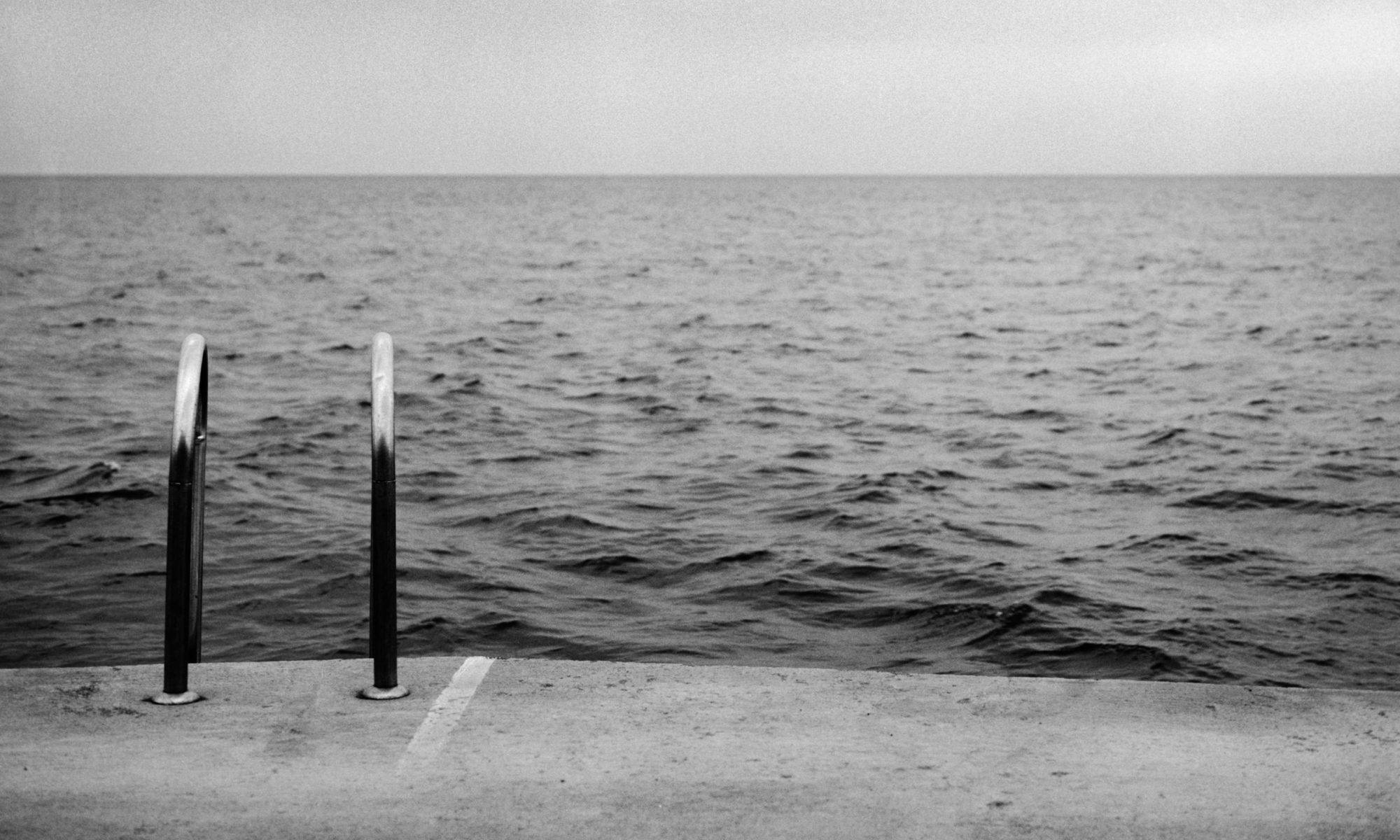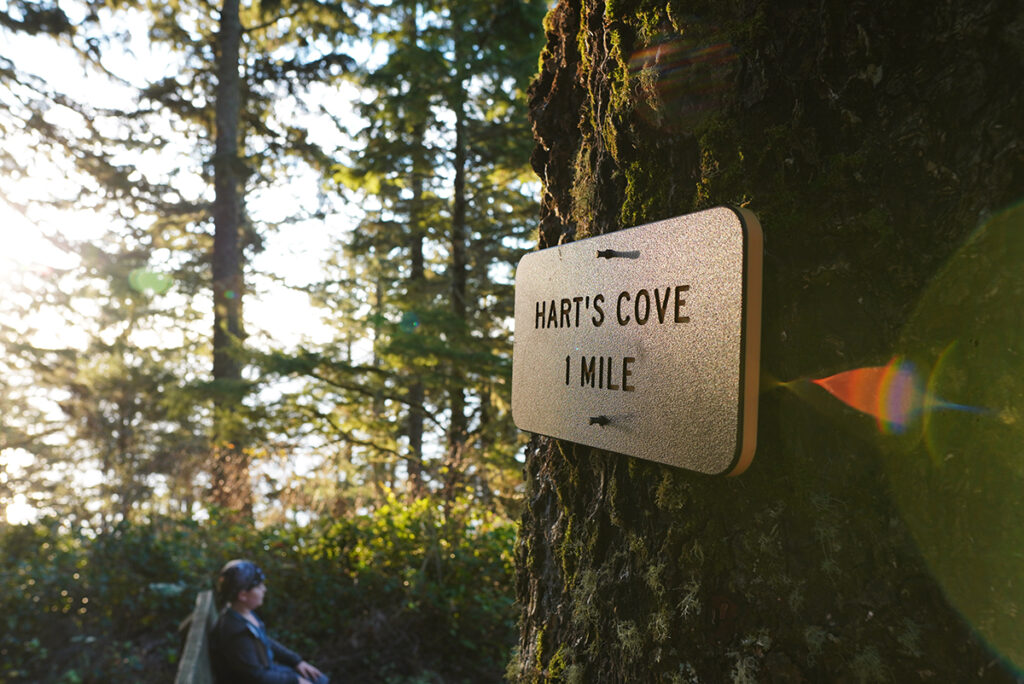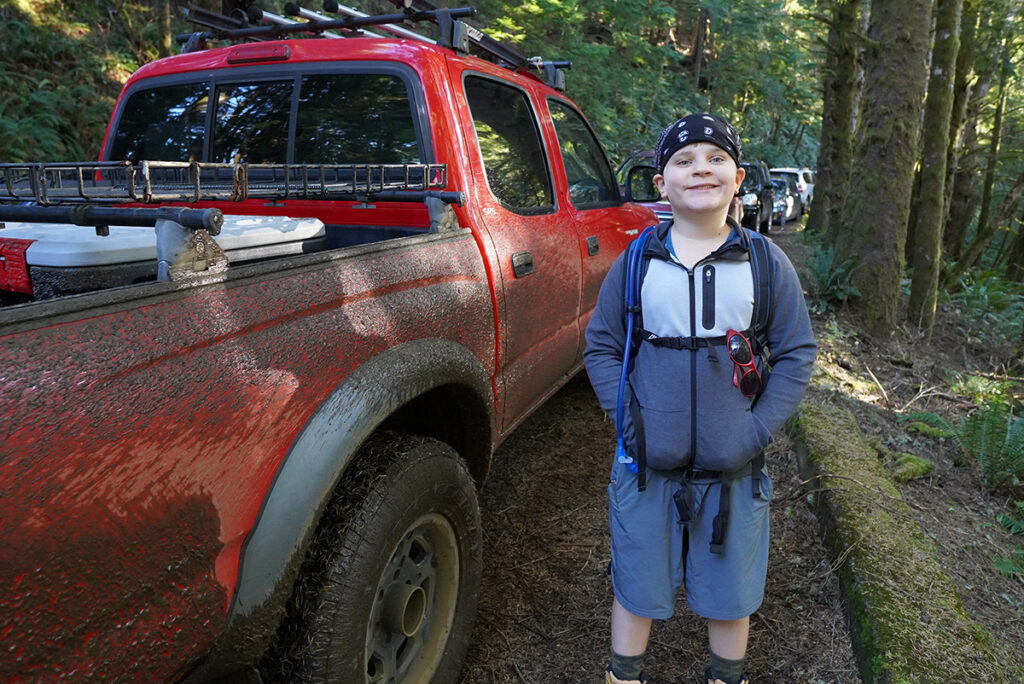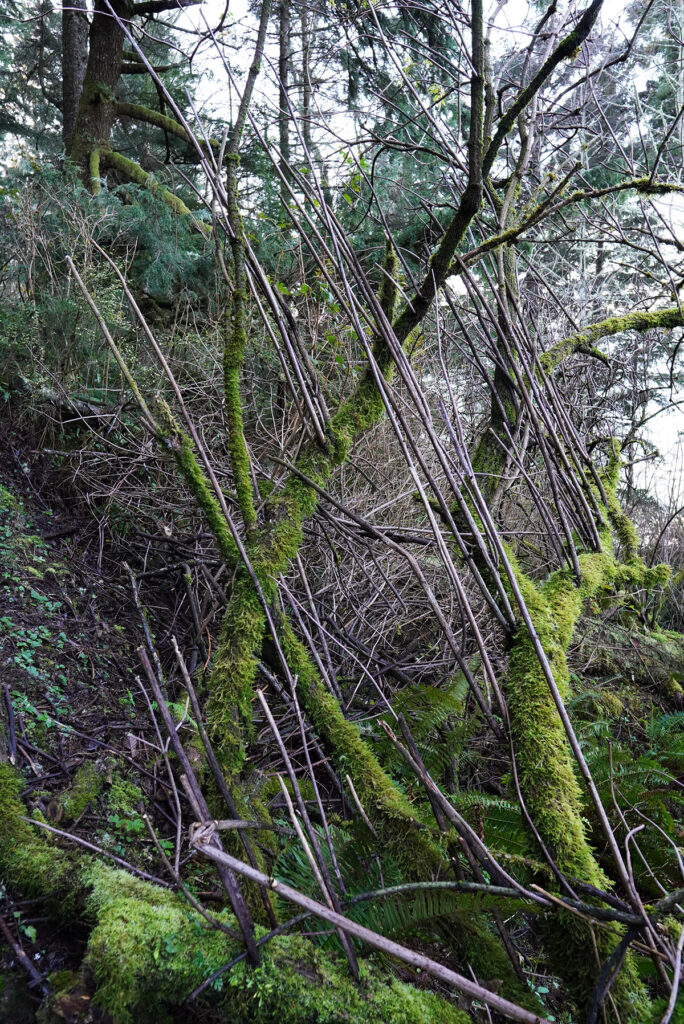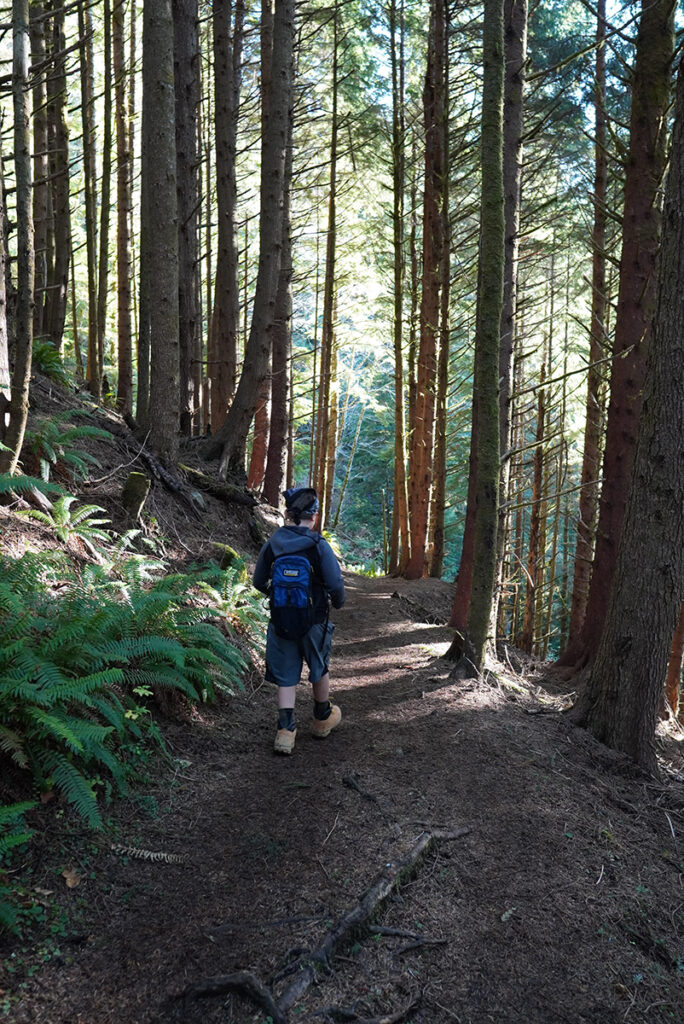Bikes. Oh, I love them so. I suppose it is a neo archetypal post bike invention thing. Late January I reached a “let it go” breaking point. Truth is… I had run out of room for my bike hoarding problem. I decided to recognize the bikes in my “collection” we only serving my ego and some sort of weird FOMO variant. Simultaneously, I was way behind a scheduled delivery of the County’s Scenic Bikeways – Brochure/Maps anticipated by the Green Bike Coop. Rick Hill, a member of the County’s Bicycle and Advisory Committee is also a longtime volunteer of Green Bikes in Waldport. The shop had run out of the popular brochures.
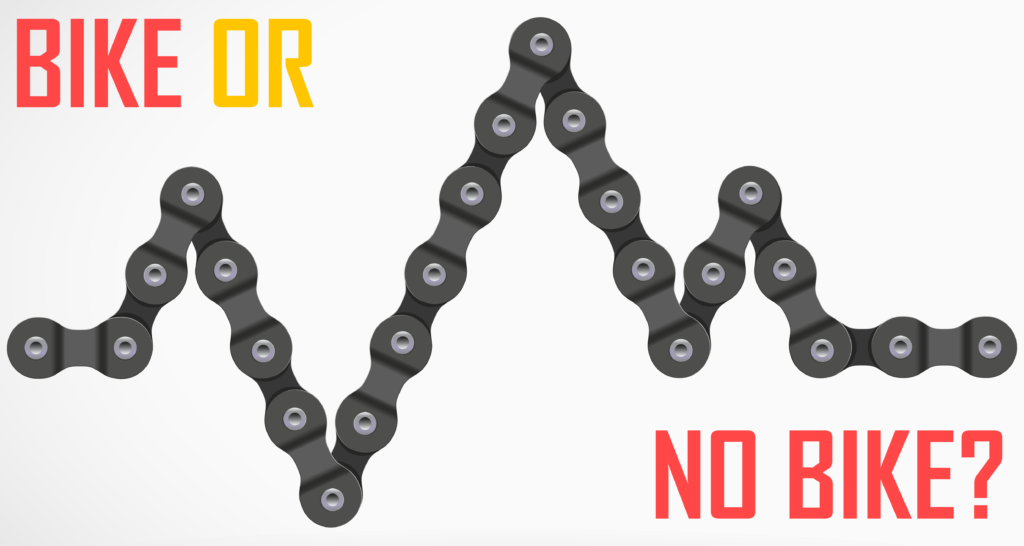
Reed and I took a Marie Kondo approach. I didn’t even take portrait photos of our precious klunkers. Our donations were second hand and garage sale jackpot discoveries. We loaded up the truck, headed to Waldport and dropped off four bikes. We had a nice visit: we handed off the bike brochures, Rick agreed to make an appearance on County Connections Radio Show, and we had a look around.
Included in our drop was Reed’s current bike. He’s basically outgrown the thing. I’ve been shopping for this next bike for several years. The unfolding trajectory to me was known – at least, I thought it was. Thus, I called Bike Newport. To my surprise, however, staff said that I should anticipate a new bike somewhere between May and July. “Oh shit…” Not good. We just gave away our daily rider. I went with my back up plan and began calling around Corvallis. By the end of the day, I had called five bike shops and visited several web sites. Nada. Keep in mind I am searching for a 24 MTB kid’s bike. My search queries were in the “kid’s bike” domain.

Here’s the copy and paste: “Bike Shortages Will Likely Last Until Next Year, and Possibly into 2022. Industry experts say production and supply chain can’t keep up with the recent boom.
When we speak of the COVID’s silver linings – discovering the outdoors seems to be high on everyone’s list. Social media easily provides the anecdotal evidence. People are getting out and getting active. This is a good byproduct of a virus that takes advantage of those with comorbidities and who have backburned the ever-essential movement practices that give humans health and wellness.
We got lucky. On the day I called Peak Sports in Corvallis the salesperson had just received and intranet notice that a Specialized order had been verified. He scanned the inventory and would be receiving one 24-inch kid’s bike. Just one.
The great news was this model was my first choice. I had planned to choose our local bike shop’s manufacturer even though the offering had a few less features. Kids go through bikes so fast. What’s your budget? How much should parents spend? Many answers, many options to consider. In that moment I didn’t hesitate. A week later we picked up Reed’s new sled.
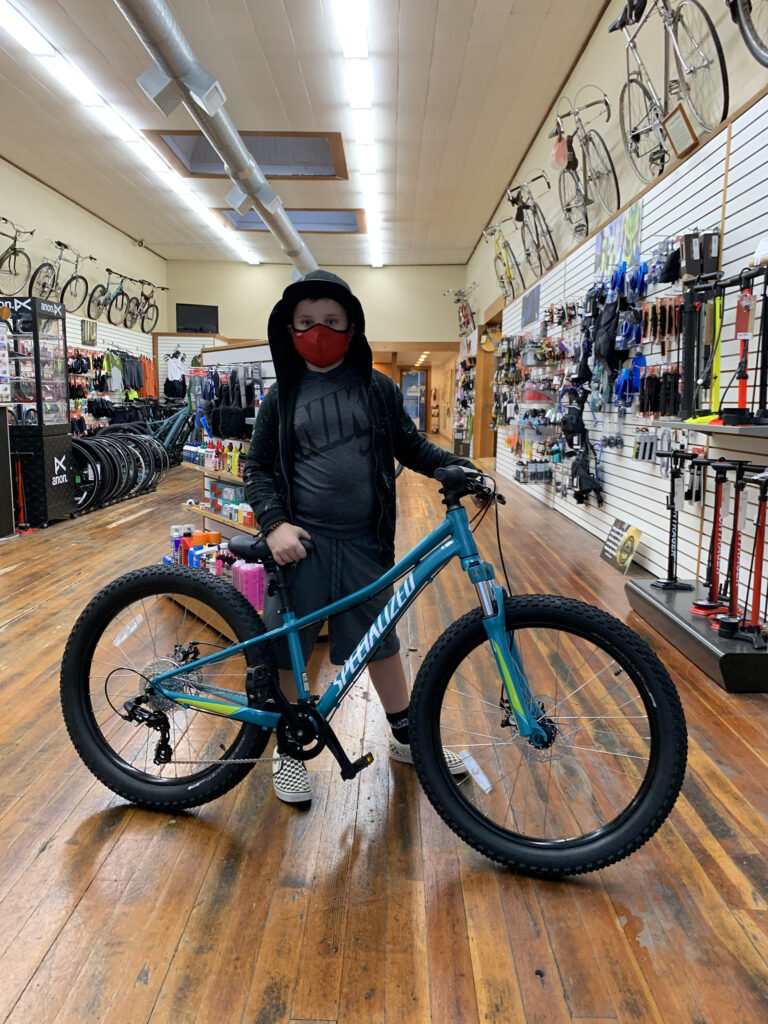
The whole affair has fired up my contemplative neurons. Wired has a new story: “A Plan to Fix the US Bike Shortage Demand for bikes has soared in the pandemic. To spur production, the US should adopt the industrial policies from the Asian countries it relies on”. If you are one to search out us manufactured products this is a quick primer on how we might think about US manufacturing resiliency.
It’s pretty amazing to realize that “In the early 1970s, bicycle sales boomed in the United States, and annual bike production averaged about 15 million per year” followed by… “Chinese factories produced about 95 percent of the 17 million bikes sold in the US in 2018, and they provide 60 percent of US bike component imports.” – Wired

As a bike enthusiast I’ve kept my eye on US made products and tried to utilize them where and when. It’s often true these parts cost more BUT they tend to be trick! Unfortunately, the entire ecosystem/supply chain of components has long existed outside of the US. At this point, it’s a fantasy that we’ll be seeing bikes made from top to bottom in the US any time soon. I would love for more local manufacturing to reoccur in the bike industry and elsewhere. It’s more or less a complex – depending on the type of products under consideration.
So. If your determined to get our early this year and determined to make 2021 a healthy victory. If you need a bike for the coming riding season… START RIGHT NOW!
Pick up that phone and be ready to make a down payment. Be ready to choose alternate brands. You might be ready to travel, as well. Pineapple Express Adventures in Port Orford has bikes, incoming bikes and used bikes. But, inventory changes quickly. Note that Green Bike Coop, Waldport, can help you repair your current bike, they give away bikes, they also sell used bikes. It’s a groovy alternative worth supporting.
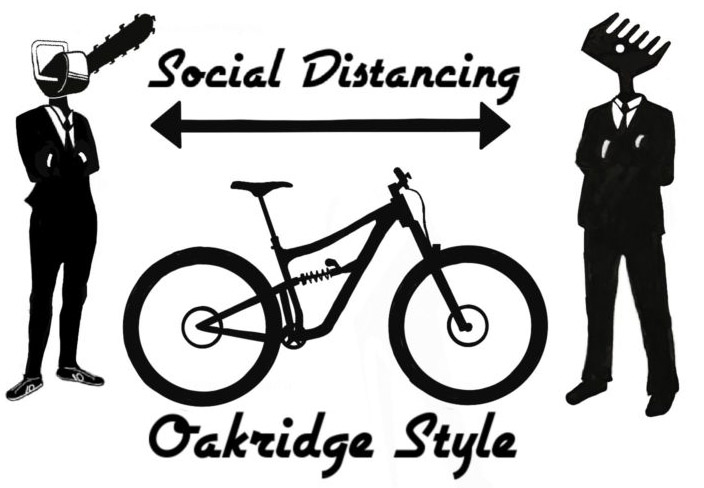
I spoke with Oakridge Bike Shop and RIGHT NOW they have LOTS of inventory. Their shop model is largely “demos” – meaning they have a rental bike feet and sell the rentals throughout the riding season. As the recipient of one of their bikes I have been incredibly happy with the result. I purchased my Salsa Timber Jack after it had been out on the trail 17 times. In essence, I purchased a used bike (new retail $2,000) for $1,250. NOTE: at this time they are uncertain just how they will unload their current bikes into spring and summer. Demos/rentals vs. owning your own bike. Again, don’t wait. If you are going to keep riding and would prefer your own bike. Figure it out. Now.
I will be emailing Oakridge Bike Shop and pre purchasing parts that I might anticipate needing to replace in the coming months. On my list: disc brake pads, chain, tires, tubes, shifting cables and housing.
Hope these tips keep you going gang! Good luck out there and be safe!
